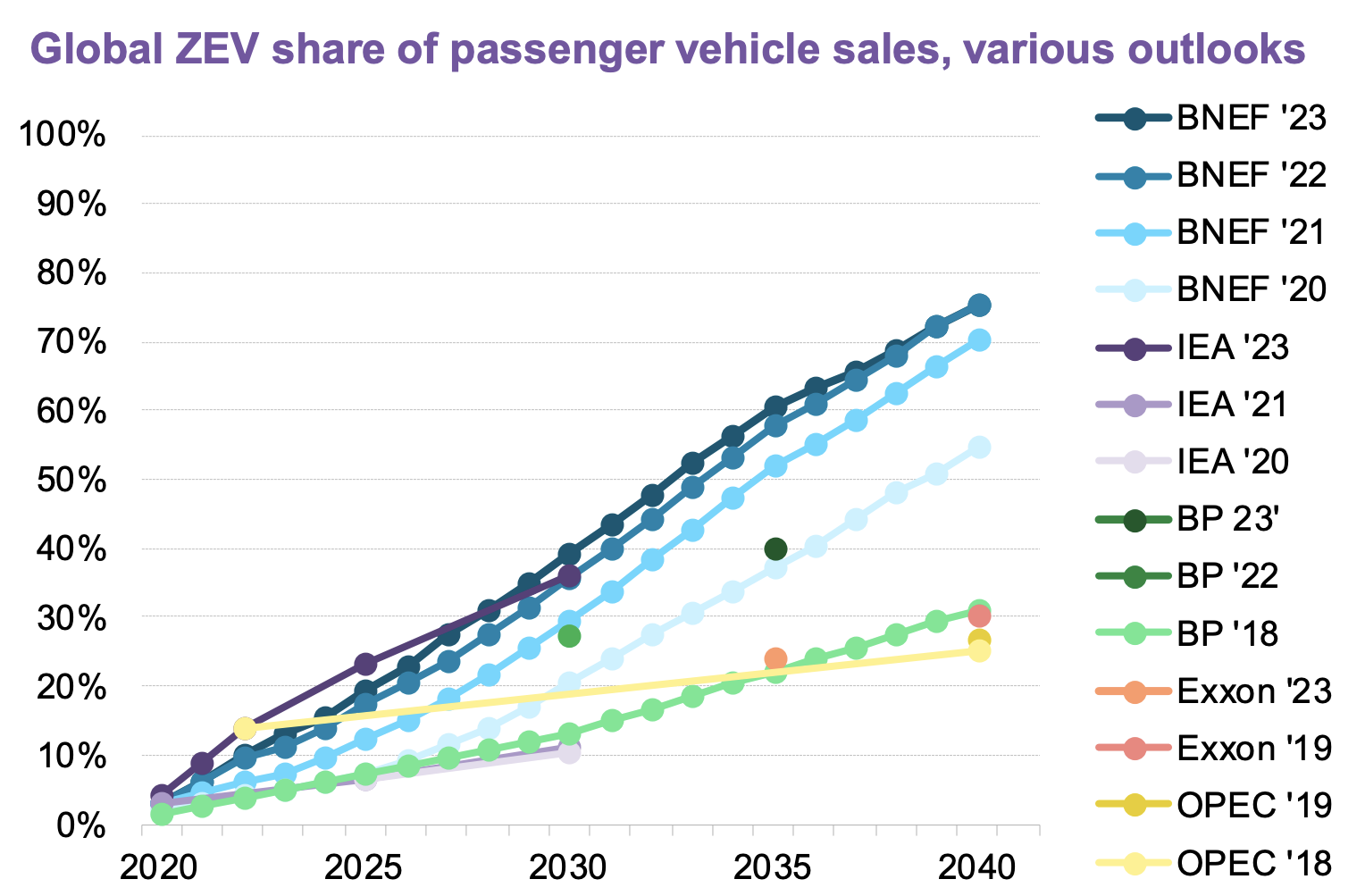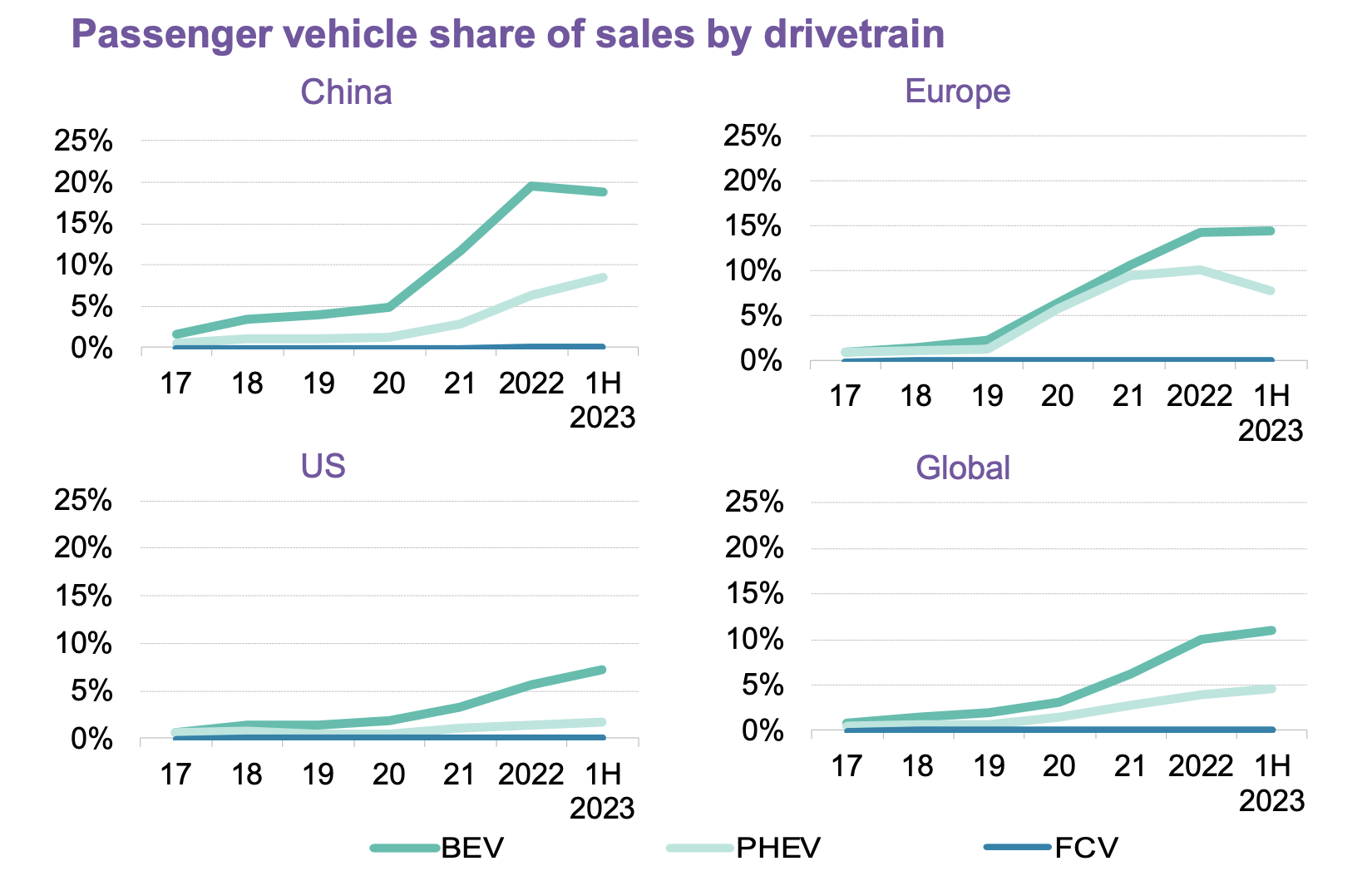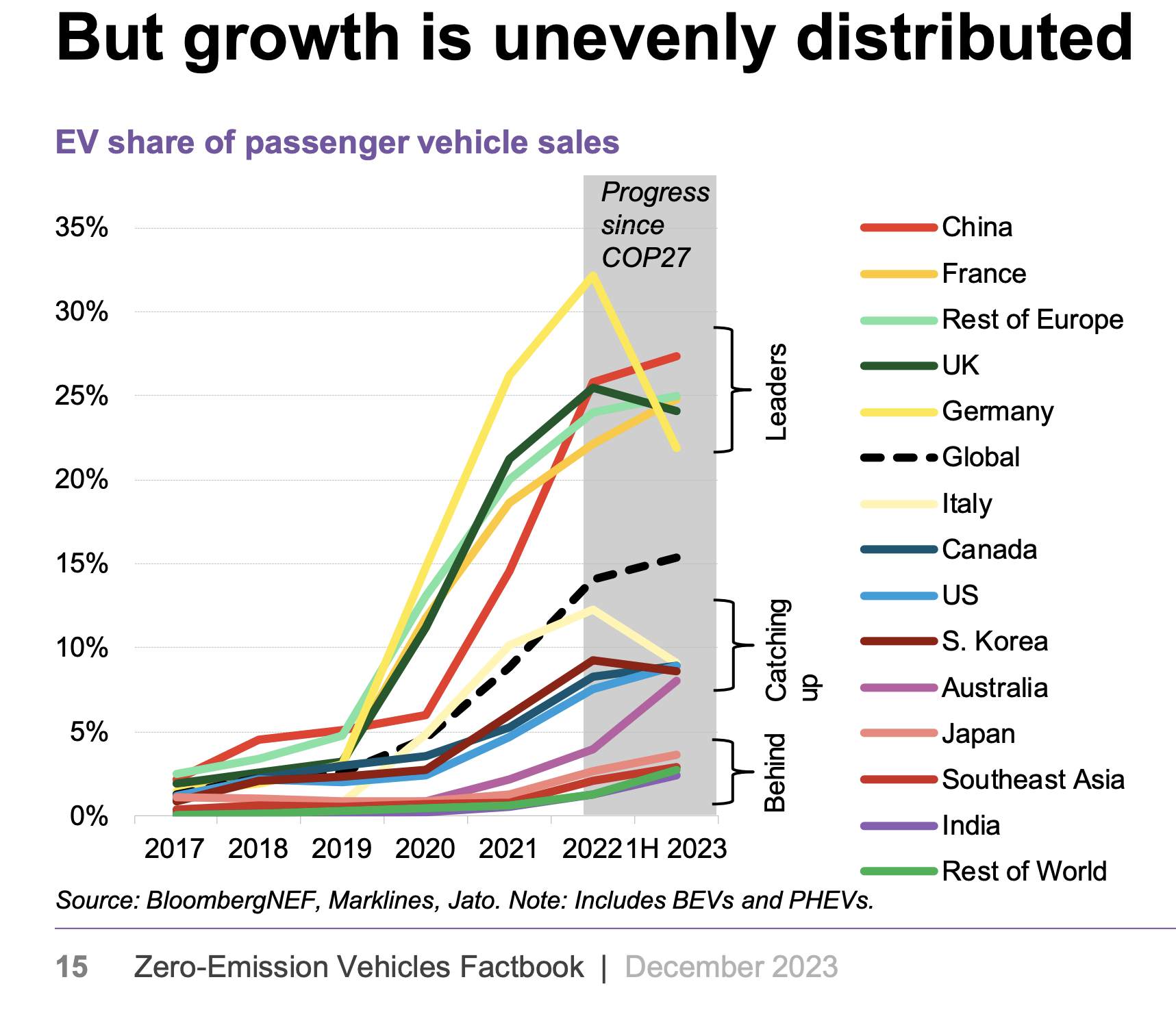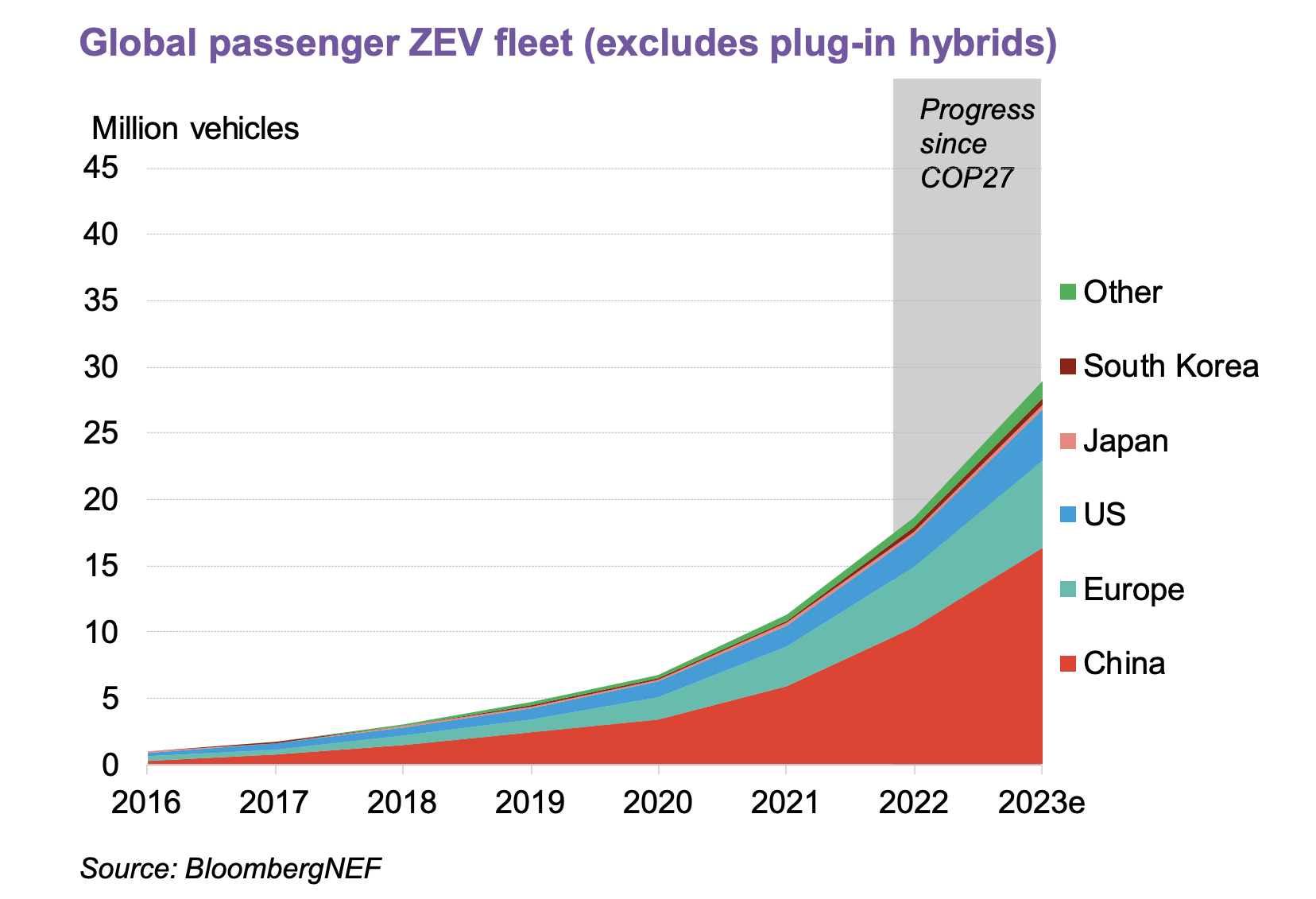Sign up for daily news updates from CleanTechnica on email. Or follow us on Google News!
Electric vehicle sales continue to grow faster than most people expected, even faster than professional analysts in the field expected, and — surprise, surprise — they’ve grown much faster than oil companies have forecasted. That’s one of the big takeaways from BloombergNEF’s latest Zero-Emission Vehicles Factbook.


In the forecasts used for those graphs, you can see that BloombergNEF has been the most bullish of the forecasters. However, naturally, there are other forecasters (we can even say many CleanTechnica readers) who had more optimistic forecasts and saw BNEF as lowballing it (not to mention OPEC, BP, and Exxon). Yet again (it happens every year), BNEF has had to revise its forecasts upwards (and some of those more ambitious, braver forecasters were spot on).
“Long-term outlooks for ZEV adoption keep getting more bullish. On average, new forecasts for the BEV fleet size in 2030 have risen 26% since last year. These upward revisions are due primarily to increased policy support and growing consumer interest,” BNEF says.
“In the base-case Economic Transition Scenario of BNEF’s 2023 Long-Term Electric Vehicle Outlook, ZEV share of passenger vehicle sales reaches 75% globally by 2040. This figure, while unchanged from last year’s report, is up significantly from the 2020 Outlook, reflecting additional policy support for ZEVs that has been introduced over the past few years. The International Energy Agency’s 2023 Global EV Outlook sees an estimated 36% BEV share of passenger vehicle sales by 2030. That’s more than double the 17% estimated in its 2022 report, bringing the IEA’s scenario closer to BNEF’s 2023 Outlook.”
Of course, not all countries are on equal footing with their EV adoption — something CleanTechnica readers know well.
As you can see in the graph above, China is leading the way in EV adoption, with several European countries right behind it. The US, Canada, Australia, other European countries, and other Asian countries are far below them.
“In over half of the global car market, EV adoption is still below 10% of sales. This includes countries like the US and Japan,” BNEF writes. “Over 30% of the global car market is in countries where EV adoption is still below 5%. EV adoption in India, Southeast Asia, Japan and the Rest of World category — which includes countries like Brazil or Russia — is climbing, but it was still below 5% in 1H 2023. In India, the market crossed the 1% EV adoption mark only in 2022, reaching 2% in 1H 2023. Relatively low-priced vehicles, lack of EV model availability, underdeveloped charging infrastructure, unreliable grids and lack of policy support are some of the issues holding these countries back.”

BNEF also notes that BEVs have been beating out their plugin hybrid cousins in the plugin world.
But, most fun of all, the global EV fleet is growing by leaps and bounds. “The fleet of passenger electric and fuel-cell vehicles has quadrupled in size since 2020. “The fleet of passenger electric and fuel-cell vehicles has quadrupled in size since 2020. A cumulative total of 41 million EVs will have been sold by the end of 2023, up from just 10 million at the end of 2020. Most of these vehicles are still on the road, which means that EVs now make up about 3% of the global fleet of passenger vehicles. China and Europe are home to 80% of that EV fleet.”
Naturally, CleanTechnica readers prefer to see BEV numbers, excluding PHEVs. BNEF provides insight on those, too.
“Using stricter criteria, the fleet of true zero-emission passenger vehicles (in other words, excluding PHEVs) has more than quadrupled in size since 2020. Cumulative all-time sales of zero-emission passenger vehicles reached around 29 million in 2023, up from just 6.8 million at the end of 2020. Despite Europe’s higher share of PHEVs, it is still the second-largest ZEV market globally, after China.”
Progress — driven by China and Europe. What comes in 2024?
Have a tip for CleanTechnica? Want to advertise? Want to suggest a guest for our CleanTech Talk podcast? Contact us here.
Our Latest EVObsession Video
I don’t like paywalls. You don’t like paywalls. Who likes paywalls? Here at CleanTechnica, we implemented a limited paywall for a while, but it always felt wrong — and it was always tough to decide what we should put behind there. In theory, your most exclusive and best content goes behind a paywall. But then fewer people read it!! So, we’ve decided to completely nix paywalls here at CleanTechnica. But…
Thank you!
CleanTechnica uses affiliate links. See our policy here.







